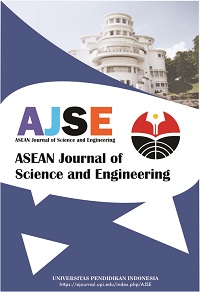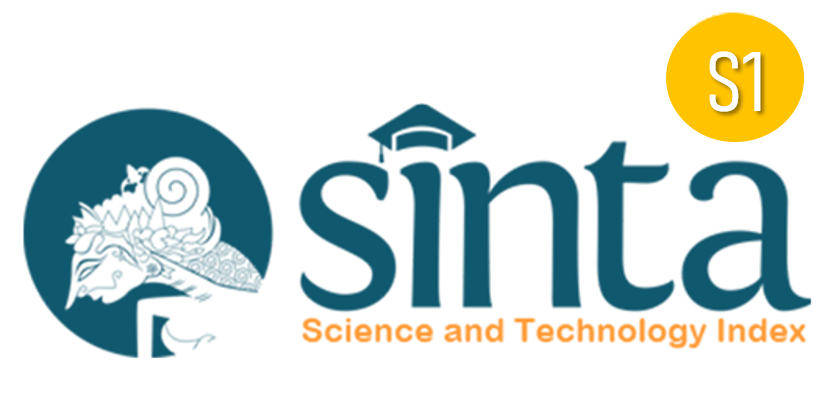Hypocholesterolemic Effect of Mature Leaf Extract of Sugarcane, Saccharum officinarum (Linnaeus, 1753), in Induced Rats
Abstract
Keywords
Full Text:
PDFReferences
Achakzai, A.K.K., Achakzai, P., Masood, A., Alikayani, S., and Tareen, R.B. (2009). Response of plants and age on the distribution of secondary metabolites on plants found in Quetta. Pakistan Journal of Botany. 41, 2129-2135.
Azam, M., Zhang, B., Jiang, Q., and Chen, K. (2013). Citrus leaf volatiles as affected by developmental stage and genetic type. International Journal of Molecular Sciences, 14, 17744-17766.
Kanda, I. (2015). Exotic Animal Formulary. The Canadian Veterinary Journal, 56(7), 736.
Chuerfa, M., and Allem, R. (2015). Study of hypocholesterolemic activity of Algerian Pistacia lentiscus leaves extracts in vivo. Revista Brasileira Farmacognosia, 25, 142-144.
Conforti, A., Bellavite, P., Bertani, S., Chiarotti, F., Menniti-Ippolito, F., and Raschetti, R. (2007). Rat models of acute inflammation: a randomized controlled study on the effects of homeopathic remedies. Business Model Canvas Complementary and Alternative Medicine, 7(1), 1-10.
Del Valle, J. C., Buide, M. L., Casimiro-Soriguer, I., Whittall, J. B., and Narbona, E. (2015). On flavonoid accumulation in different plant parts: Variation patterns among individuals and populations in the shore campion (Silene littorea). Frontiers in Plant Science, 6, 939.
Dobiásová, M., and Frohlich, J. (1999). Advances in the understanding of the role of lecithin cholesterol acyltransferase (LCAT) in cholesterol transport. Clinical Chimica Acta, 286, 257-271.
El Sawi, S.A.M., Mahmoud, D.M.M., and El Alfy, T.S.M.A. (2013). Phytochemical screening and qualitative analysis of the polysaccharide contents of Chorisia insignis. Journal of Herbs, Spices, and Medicinal Plants, 19, 313-320.
Gerhardt, A.L., and Gallo, N.N. (1998). Full-fat rice and oat bran similarly reduce hypercholesterolemia in humans. The Journal of Nutrition, 128, 865-869.
Gianotto, A.C., Bespalhok, J., Arruda, P., and Burnquist, W. (2011). Sugarcane (Saccharum X officinarum): A reference study for the regulation of genetically modified cultivars in Brazilian Tropical Plant Biology. Tropical Plant Biology, 4, 62-89.
Kujiper, J. (1915). Degroei van bladschijf, bladscheede em stengel van het suikerriet. Arch Suikerind Ned Indi, 23, 528–556.
Masa, C. V., Sosa Díaz, T., Alías Gallego, J. C., and Chaves Lobón, N. (2016). Quantitative variation of flavonoids and diterpenes in leaves and stems of Cistus ladanifer L. at different ages. Molecules, 21(3), 275.
Nair, A.B., and Jacob, S. (2016). A simple guide for dose conversion between animals and humans. Journal of Basic Clinical Pharmacy, 7, 27-31.
Rouhi-Boroujeni, H., Heidarian, E., Mohammadizzadeh, E., and Rafieian-Kopaei, M. (2015). Herbs with anti-lipid effects and their interactions with a statin as a chemical anti-hyperlipidemia group drugs: A systematic review. ARYA Atheroscler, 11, 244-251.
Singh, A., Lal, U.R., Mukhtar, M., Mukhtar, H.M., Singh, P.S., and Shah, R.K. (2015). Phytochemical profile of sugarcane and its potential aspects. Pharmacognosy Reviews, 9, 45-54.
Watanabe, T., Maejima, E., Urayama, M., Owado, M., and Yamauchi, A. (2016). Distribution of minerals in young and mature leaves of different leaf vegetable crops cultivated in a field. Open Journal of Plant Science, 1, 005-009.
Yokozawa, T., Cho, E.J., Satoh, A., Okamoto, T., and Sei, Y. (2006). The protective role of Chinese prescription Kangen-karyu extracts on diet-induced hypercholesterolemia in rats. Biological and Pharmaceutical Bulletin, 29, 760-765.
You, C.L., Su, P.Q., and Zhou, X.X. (2008). Study on effect and mechanism of Scutellaria baicalensis stem-leaf total flavonoids in regulating lipid metabolism. Zhongguo Zhong Yao ZA Zhi, 33, 1064-1066.
Zhao, D., Glynn, N.C., Glaz, B., Comstock, J.C., and Johnson, R.M. (2012). Development of leaf spectral models for evaluating large numbers of sugarcane genotypes. Crop Science, 52, 1837-1847.
DOI: https://doi.org/10.17509/ajse.v1i3.38784
Refbacks
- There are currently no refbacks.
Copyright (c) 1970 Universitas Pendidikan Indonesia

This work is licensed under a Creative Commons Attribution-ShareAlike 4.0 International License.












